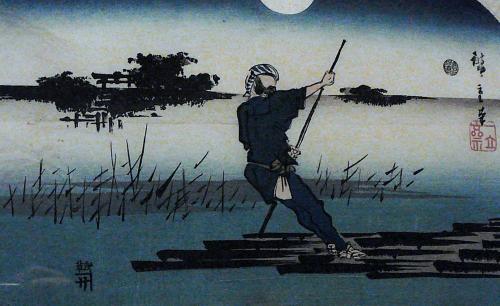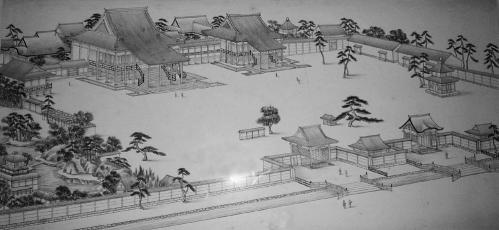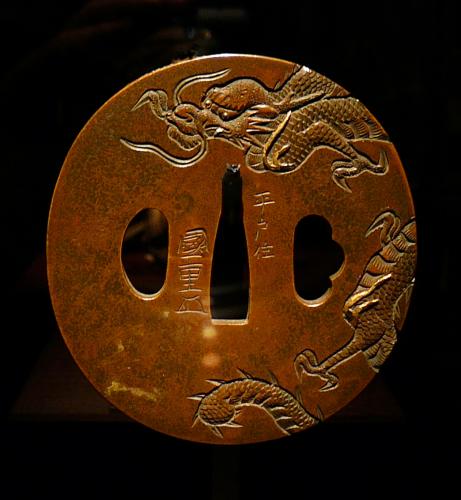... newer stories
Montag, 2. Februar 2009
Bilder aus Japan

Zur Zeit läuft im Siebold-Huis in Leiden eine umfangreiche Ausstellung von Holzschnitten Hiroshiges, von dem van Gogh so begeistert war, daß er ihn kopierte. Aber große Kunst? Ich weiß nicht. Manche Drucke scheinen mir nicht weit von Comics entfernt.
Als Hiroshige, angeregt vom großen Hokusai, in den 1820er Jahren seine Laufbahn als Holzschnitzer begann, hielt sich Philipp Franz von Siebold aus Würzburg als Militärarzt und Nachfahre Engelbert Kämpfers in holländischen Diensten sieben Jahre auf der kleinen, künstlichen Insel Deshima im Golf von Nagasaki auf, die der niederländischen Ostindienkompanie als einziger Handelsplatz in dem Westlern verschlossenen Japan der Tokugawa-Shogune eingeräumt worden war. Als guter Arzt erhielt Siebold auch Gelegenheit, die Insel zu verlassen und hochrangige japanische Patienten zu behandeln. Er nahm dafür kein Geld, sondern ließ sich mit Gegenständen beschenken, die den Grundstein zur umfangreichsten ethnographischen Sammlung aus Japan in Europa legte. Von der niederländischen Regierung auf unbestimmte Zeit vom Dienst freigestellt, systematisierte er nach seiner Ausweisung aus Japan seine Kollektion und machte sie nach und nach in seinem Haus in Leiden der Öffentlichkeit zugänglich. Einen ihm in Bonn angebotenen ersten Lehrstuhl für Japanologie lehnte er mit den Worten ab, er wolle doch nicht von einem Roß auf einen Esel umsatteln.
Was Siebold aus Japan nicht mitnehmen konnte, ließ er im Bild festhalten. Damit beauftragte er den einheimischen Maler Keiga Kawahara aus Nagasaki, dessen Tuschezeichnungen mir vielfach besser gefallen als Hiroshiges Schnitte.

 “No great artist ever sees things as they really are.
“No great artist ever sees things as they really are. If he did, he would cease to be an artist.
Take an example from our own day. I know that you are fond of Japanese things. Now, do you really imagine that the Japanese people, as they are presented to us in art, have any existence? If you do, you have never understood Japanese art at all. The Japanese people are the deliberate self-conscious creation of certain individual artists. If you set a picture by Hokusai, or Hokkei, or any of the great native painters, beside a real Japanese gentleman or lady, you will see that there is not the slightest resemblance between them. The actual people who live in Japan are not unlike the general run of English people; that is to say, they are extremely commonplace, and have nothing curious or extraordinary about them.
In fact the whole of Japan is a pure invention. There is no such country, there are no such people. One of our most charming painters went recently to the Land of the Chrysanthemum in the foolish hope of seeing the Japanese. All he saw, all he had the chance of painting, were a few lanterns and some fans. He was quite unable to discover the inhabitants, as his delightful exhibition at Messrs. Dowdeswell's Gallery showed only too well. He did not know that the Japanese people are, as I have said, simply a mode of style, an exquisite fancy of art. And so, if you desire to see a Japanese effect, you will not behave like a tourist and go to Tokio. On the contrary, you will stay at home and steep yourself in the work of certain Japanese artists, and then, when you have absorbed the spirit of their style, and caught their imaginative manner of vision, you will go some afternoon and sit in the Park or stroll down Piccadilly, and if you cannot see an absolutely Japanese effect there, you will not see it anywhere.” (Oscar Wilde,1882)

Tsuba, Stichblatt eines japanischen Schwerts aus Siebolds Sammlung
... link (0 Kommentare) ... comment
... older stories



